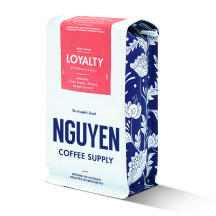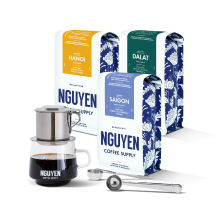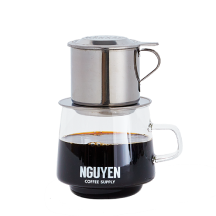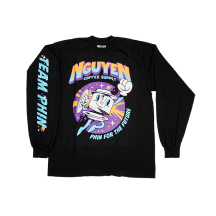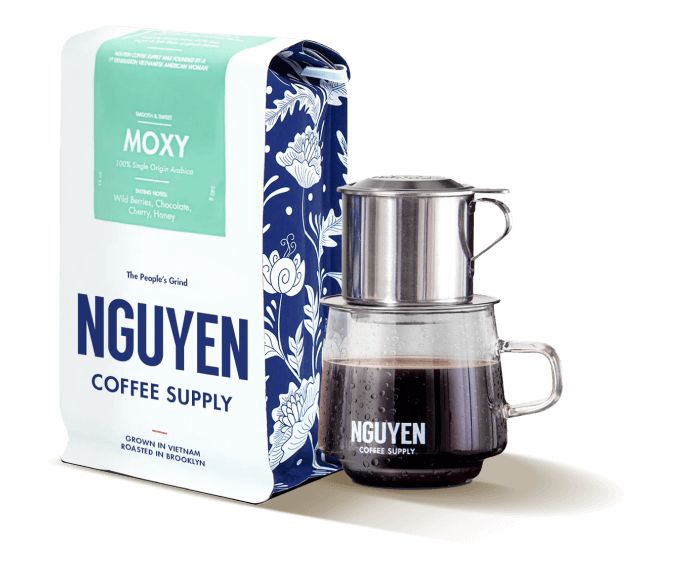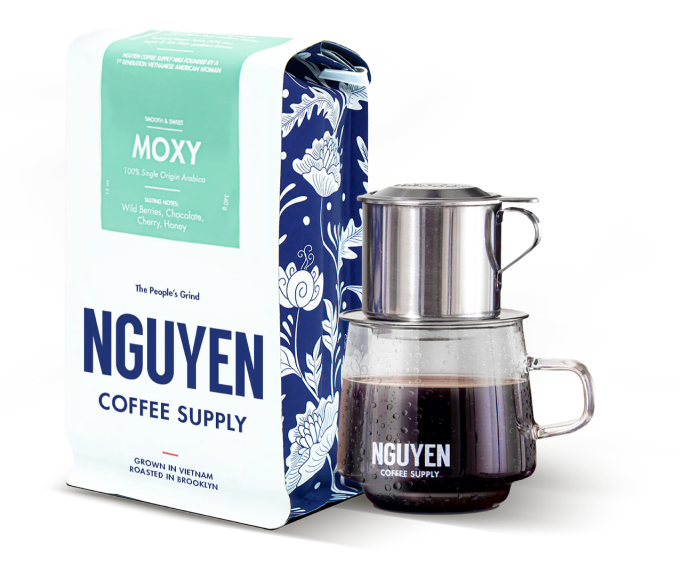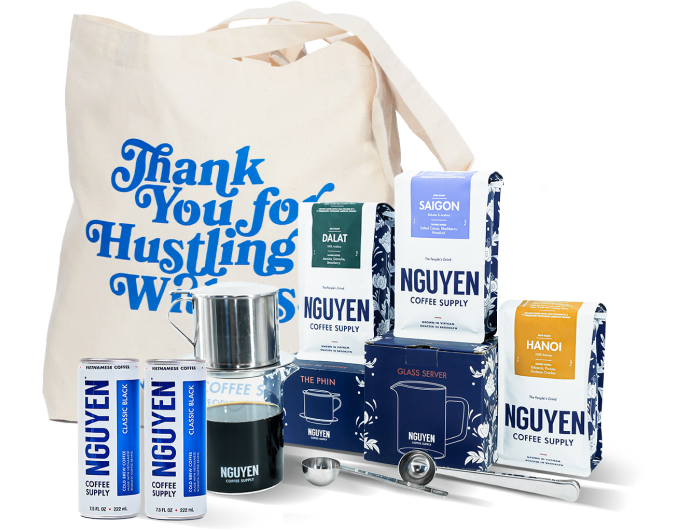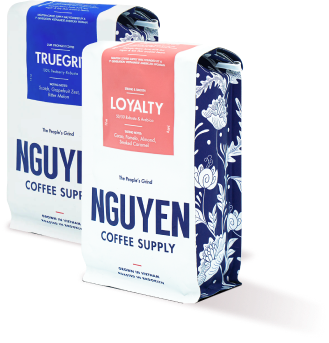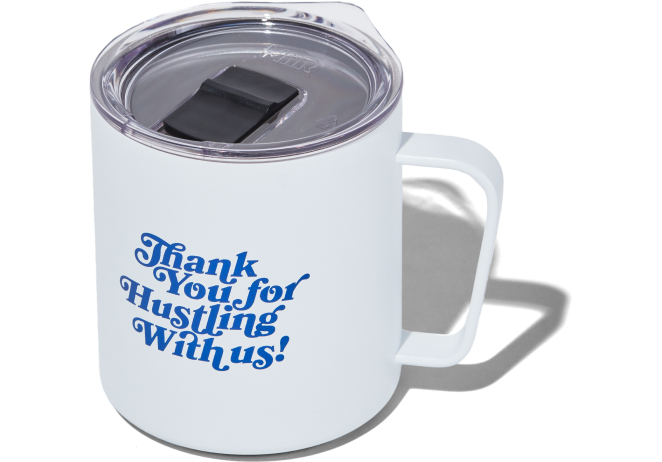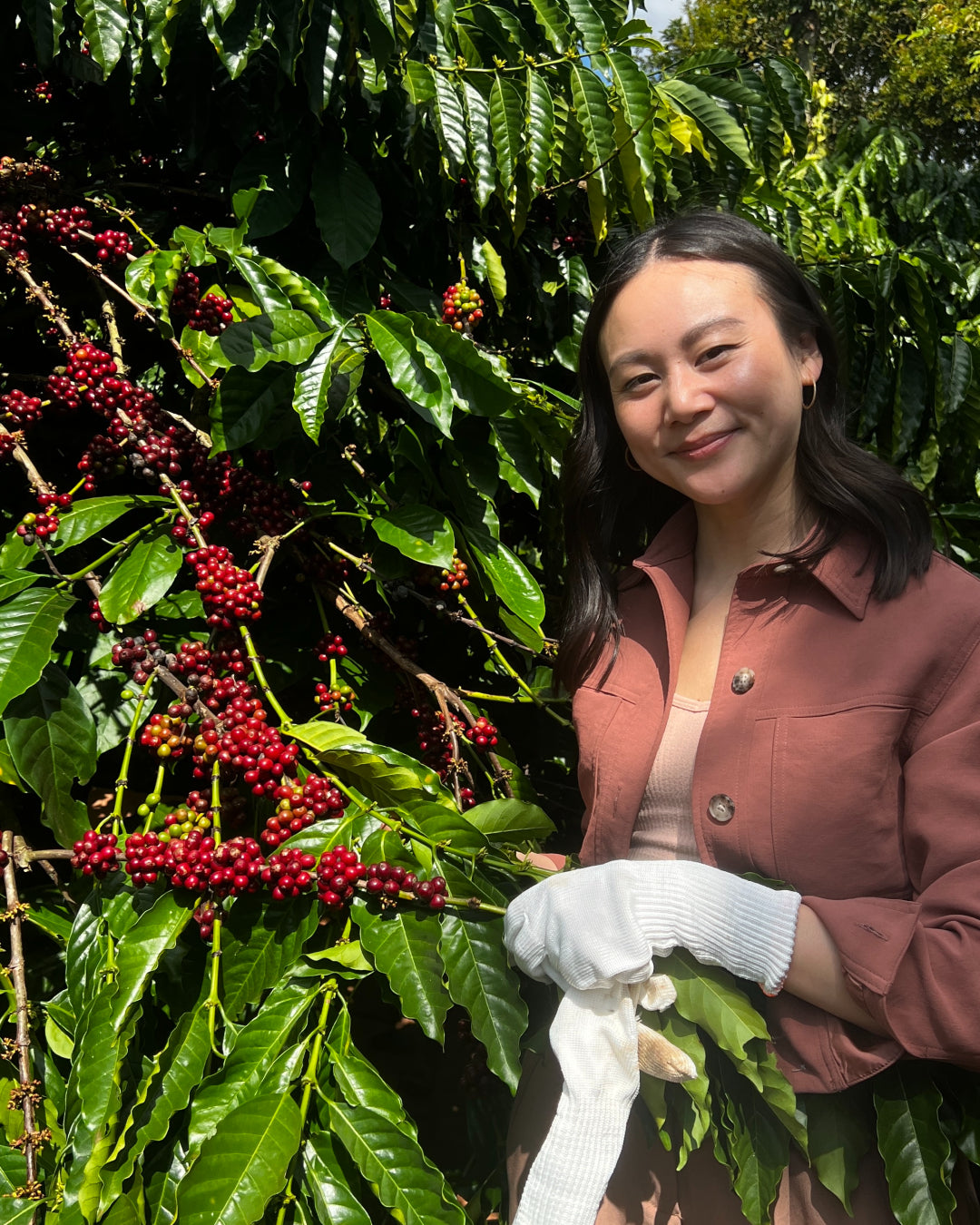
Types of Vietnamese Coffee Beans: Arabica Vs. Robusta
Did you know: Vietnam is the world's second-largest producer of coffee? Along with baguettes and an alphabet system, coffee was introduced to the Vietnamese by the French, who colonized Vietnam in the 19th century.
Today, café culture is huge in Vietnam, where you can grab coffee for under a buck at the thousands of street stalls located in every city as well as in coffeeshops and restaurants. And it's still growing: according to the International Coffee Organization, coffee drinkers in Asia have doubled since 1990.
So what makes coffee from Vietnam different from coffee anywhere else? The vast majority of coffee in Vietnam comes from the robusta species, a hardy plant that can grow on lower elevations. Taste-wise, coffee made from robusta is generally stronger, nuttier, and darker than that made from arabica, the other primary variety.

Though arabica is less common in Vietnam, it's becoming more popular with some farmers. One popular sub-variety of arabica in Vietnam is called Catimor, which is actually descended from a hybrid arabica-robusta bean. Nowadays, local innovators like coffee shops Bosgaurus and La Viet are introducing Vietnamese consumers to newer varieties like Bourbon and Typica.
So which is better? It really comes down to personal preference. In the West, arabica is generally favored for its fruitier, lighter-bodied quality. Think of the coffee at your favorite fancy coffee shop in New York City: light, perhaps even citrus-y. However, most coffee in Vietnam is made with robusta, whose bold profile makes the country's signature condensed milk coffee drink, the ca phe sua, so distinct and delicious.
Here are the different types of coffee found in Vietnam:
Robusta
When grown properly, robusta is an incredibly diverse bean—each region produces robusta with different qualities, indicating the importance of terroir in coffee farming. The highest quality of these is grow in the central highlands, where increased elevation yields more nuanced flavors. Robusta beans have a higher amount of caffeine than arabica, but contain 60% less sugar and fats. Tasting notes might include: chocolate-y, nutty, and earthy.
Arabica
Encompassing a broad category of species that include Bourbon, Typica, and Catimor, arabica is generally a bit tougher to grow than robusta. The bulk of arabica produced in Vietnam is of the Catimor variety, which is a hybrid of the arabica and arabica-robusta species. General tasting notes might include: fruity, citrusy, and light.
Found in the Cau Dat district of Da Lat in Lam Dong Province, Typica and Bourbon are premium categories of Arabica introduced by Europeans in the 80s. They've largely disappeared as farmers favored more high-yield varieties like Catimor, but with a new craft coffee movement taking over Vietnam, some are looking to bring them back.
Other coffees you might encounter
Cherry coffee: Confusingly, cherry coffee is also known as "jackfruit coffee." These low-yield plants are not known for their quality, and are generally planted simply to block wind for robusta coffee lots. The name comes from the mild sour taste, akin to that of cherry.
Weasel coffee: This erroneously-named "weasel coffee" refers to robusta beans that have been eaten...and well, pooped out, by civet cats, an also erroneously-named, non-feline animal related to the mongoose. According to the Smithsonian, the practice began as a way for the colonized Vietnamese to drink coffee, since it was banned from them by the European colonists. The taste is said to be smoother, richer, and have a more elegant taste. One should hope, since the stuff can sell for up to $600 a pound.
Elephant coffee: Think weasel coffee, but think elephants. You get the idea. Often found in the central highlands region, this method is said to likewise soften and mellow out the coffee.
--
Shop our Vietnamese Coffee Starter Kit here.
Shop our Vietnamese Coffee Trio and try both arabica & robusta coffee.
Shop our Vietnamese Coffee Ultimate Bundle here.
Learn the history of Vietnamese coffee here.
Read about coffee processing here.

